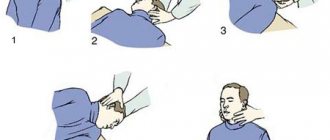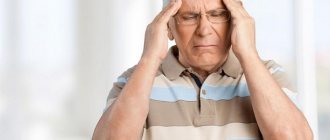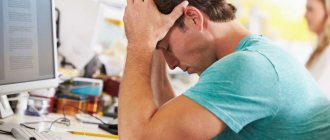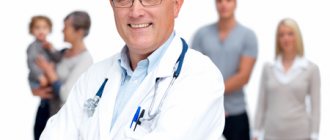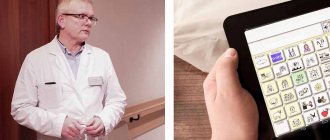Rehabilitation after a stroke at home in Krasnodar and the Krasnodar region will help a person restore all lost skills. But it is necessary that the entire process be carried out under the supervision of qualified specialists using a personal approach. The brain is an extremely important human organ, so in case of any disease it is necessary to take timely measures. Otherwise, this will lead to risks of deterioration in the performance of the entire body.
During the development of the disease, any part of the brain or several at once is affected. And this leads to loss of speech, cognitive, motor functions or a number of others.
A well-designed and compiled rehabilitation program at home helps to cope with all the negative consequences and restore lost functions. It is necessary to be in constant contact with specialists, strictly follow their recommendations, take care of the patient, and provide all possible support and assistance.
And also be sure to evaluate all possible risks and understand whether it is possible to opt for rehabilitation in an inpatient boarding house under round-the-clock supervision of doctors. In Krasnodar and the Krasnodar Territory, such a reliable option is the private boarding house for the elderly “Harmony”.
Possible negative consequences of cerebrovascular accident
Apoplexy is one of the most severe and dangerous types of cerebrovascular insufficiency, in which the optimal amount of blood ceases to flow into the human brain.
As a result, oxygen ceases to flow into organs and systems, which leads to oxygen starvation and various neurological disorders. The initial sign of the onset of the disease is thrombosis, rupture of blood vessels due to vascular insufficiency. The most common negative consequences of such an apoplexy are lack of oxygen, death of neuronal brain cells, and internal hemorrhage.
The attack itself lasts a day or more. And during its onset, the patient must be urgently taken to the hospital, where he will be under the supervision of a team of qualified doctors. It is the timely call of an ambulance, the help of doctors and subsequent rehabilitation that is extremely necessary, since the process of death of brain cells is extremely dangerous and continues even after the main symptoms of pain have already passed.
What is the danger of having an attack?
- Partial or complete loss of physical activity, as the command to the limbs is given by the affected brain.
- Mental disorder, loss of speech and cognitive abilities.
- Memory loss, temporary or complete amnesia.
- Impaired coordination of movements and fine motor skills.
- Complete or partial loss of vision.
- decreased immunity, infectious diseases, etc.
In each specific case, such dangerous consequences manifest themselves to a more or less pronounced degree, while some are absent. This depends on focal or complete brain damage, which directly affects the possibility and duration of recovery.
Stroke and its side effects
A stroke condition is a severe disruption of blood flow in the human brain, which leads to the death of certain areas of the brain and damage without the possibility of recovery of neurons. Stroke has two characteristics. When a vessel is blocked by a blood clot, an ischemic stroke is created, and when a cerebral vessel ruptures, a hemorrhagic stroke is created. The most common occurrence in our country is the first type - ischemic stroke. When it occurs, the complete death of nerve endings and brain cells occurs, which creates the possibility of paralysis and loss of speech.
Some of a person’s capabilities can be restored with proper assistance and rehabilitation, but not all. The sooner the patient receives help, the higher the possibility of restoring the body and the functioning of the human brain. There are some signs of an attack of this pathology:
- ask the affected person to smile; during a stroke, the smile will not be symmetrical;
- ask the person to raise their hands up, but they should not drop spontaneously;
- ask the person to state his first and last name - the speech should be clear and understandable (intelligible).
If at least one of the three verification methods is suspicious, then this is the main reason to call an ambulance for the injured person.
A person who has had a stroke feels severe weakness in his hands and cannot hold objects in his hands for a long time. Performing normal activities, dressing, washing, moving, creates some problems for a person that he has not encountered before.
Severe headaches can haunt the patient throughout the entire attack, which affects the vision and general condition of the sick person. Each type of stroke has its own symptoms, according to which an experienced doctor makes the correct diagnosis of the patient’s condition.
Hemorrhagic stroke - symptoms
This type of stroke usually develops in the afternoon, after intense physical exertion or against the background of a hypertensive crisis. In this case, a person receives a sharp dagger pain in one of the two hemispheres of the brain. In this case, the following symptoms appear:
- blood and blood pressure increases;
- body temperature rises;
- vomiting and nausea occur;
- epileptic seizure;
- wheezing breathing;
- purple spots appear on the skin.
Loss of consciousness and coma often occur. Depending on the location of the source of inflammation, speech, vision, and sensitivity in the hands and feet disappear.
Ischemic stroke - symptoms
This type of stroke does not occur suddenly and develops gradually in a person. When it occurs, the following symptoms appear:
- the occurrence of paralysis and loss of sensation in the legs and arms;
- loss of the ability to correctly express one’s thoughts out loud, to reproduce speech correctly;
- loss of consciousness;
- uncontrolled movements of the pupils;
- unsteady gait.
All this indicates the occurrence of this type of stroke and requires urgent hospitalization of the person. If help is not given in a timely manner, the patient’s condition worsens significantly, which leads to serious consequences for the body. These two types of strokes bring serious complications to a person and require rehabilitation measures in the hospital of the Vesna boarding house in the Moscow region.
How long does rehabilitation after a stroke last at home in Krasnodar?
The exact recovery time varies from person to person and depends on the following factors:
- State of human health, existing diseases, characteristics of the body.
- The patient's age. With the advent of old age, it becomes much more difficult to restore the body.
- The intensity of the symptoms, the affected areas of the brain and what kind of attack the patient had.
On average, according to statistics, recovery from a primary stroke takes from 3 months to six months, depending on the complexity of the situation. In more complex cases, therapy using specialized methods and technologies can last up to 8 months.
After a secondary attack, the patient recovers for a whole year, the likelihood of a full return of all lost functions is reduced, some of them will remain with the patient. And with the third and subsequent strokes, the likelihood of falling into a coma or death increases significantly.
Features of rehabilitation after ischemic stroke
All restoration activities take a period from several months to 2 – 3 years, sometimes more. The initial period is spent in a hospital, then the patient can undergo treatment at home, on an outpatient basis, but a sanatorium is best suited for these purposes. Residual effects of motor disorders are eliminated by the use of medications that improve blood supply to damaged areas of the brain, vitamin preparations, antioxidants, and agents that stimulate metabolic processes in the brain. In this type of impairment after an ischemic stroke, functional restoration is carried out mainly by kinesiotherapy, manual techniques and biofeedback with feedback. These activities are complemented by massage, physiotherapeutic procedures (sea baths, mud, electrophoresis), and acupuncture. Special attention is paid to restoring self-service. Physical exercises - passive and active, gradually restore muscle tone, amplitude and strength of movements, improve local blood circulation and contribute to the disappearance of atrophies.
The consequences of an ischemic stroke of the brain with the restoration of speech disorders require the use of drugs that enhance the metabolism of nerve cells - nootropics, amino acids. Neurophysiologists and speech therapists-teachers conduct classes with such patients. For lesions of the cerebellum that occur with dizziness, nausea, noise in the ears and head, and problems with facial muscles, the rehabilitation methods are similar.
Many clients, during rehabilitation after an ischemic stroke, experience astheno-neurotic disorders, often with a depressive component. Patients lose confidence in the success of treatment and feel like a burden. They develop excessive weakness, a reluctance to work on themselves, and apathy towards the events happening around them. Therefore, at this moment it is important to seek the help of a psychiatrist or psychotherapist, who will eliminate these unpleasant complaints using special psychotherapy techniques and the prescription of psychotropic medications.
The text was checked by expert doctors: Head of the socio-psychological service of the Alkoklinik MC, psychologist Yu.P. Baranova, L.A. Serova, a psychiatrist-narcologist.
CAN'T FIND THE ANSWER?
Consult a specialist
Or call: +7 (495) 798-30-80
Call! We work around the clock!
When to start recovery after ischemic stroke injury
With such an illness, the patient must immediately go to the hospital to receive professional emergency care, followed by reliable treatment and elimination of the root causes of its manifestation.
The average hospital stay is 2-3 weeks if there are no complications. This period is enough to collect all the tests, identify the characteristics of the situation and drug treatment. But it is recommended to start professional rehabilitation from the first day after an apoplexy strike while still in the hospital under the supervision of doctors . This way you will restore lost speech, memory, etc. as reliably as possible.
Remember, the faster you begin to normalize your condition, the higher the likelihood of obtaining the most favorable prognosis for recovery, and the risk of relapse of an attack will also be reduced. It also allows you to more reliably and safely cope with various secondary diseases that appear after an attack.
Main types of stroke
First of all, understand what type of apoplexy the patient has and the further process of recovery depends on this. Thus, the ischemic variant has a more superficial nature of vascular damage and the rehabilitation period will be shorter. But with the hemorrhagic type, the rehabilitation period is longer, but the negative consequences are the least pronounced.
To do this, it is important to identify the main stages of a stroke attack:
- The most acute is the beginning of the blow itself with damage to the nerve endings. Lasts from several hours to a day.
- Acute - occurs in the first minutes after a disruption of nerve connections has already occurred with a pronounced manifestation of dangerous symptoms.
- Subacute. At this stage, specialists have already helped to cope with the attack, prevented the development of death, and stabilized the person’s condition. On average, this stage lasts 3 days and requires mandatory round-the-clock supervision by doctors, reliable care, and following all the prescriptions of specialists to prevent the recurrence of the stroke.
Then a rehabilitation program is carried out, which is divided into early and late . Early occurs within the first few weeks of the client's hospital stay. And late rehabilitation after a stroke at home in Krasnodar is carried out after discharge . It is important to analyze in more detail the features of rehabilitation in specific areas and identify their features.
Technical means of rehabilitation
Rehabilitation means after stroke
is a set of devices that help quickly rehabilitate in case of any complications. To recover from a stroke, the patient will need special exercise equipment and structures that will help him:
- restore limb mobility
- improve blood circulation
- increase mobility
- avoid muscular dystrophy
- support heart function
Today, a wide range of medical products are used for this purpose, which make it possible to simplify the care of people who have suffered a stroke and help to fully or partially restore body functions. A wide range of means of rehabilitation after a stroke. Effective recovery after a stroke begins with the correct arrangement of the patient’s bed. For the care and rehabilitation of such patients today the following are used:
- special anti-decubitus mattresses
- lifts
- simulators
- walkers and crutches
- bathroom seats
- wheelchairs
- rehabilitation suits
- toilet chairs
- exercise equipment for restoring limb mobility
By choosing a set of means for the rehabilitation of patients who have suffered a stroke, it is possible to almost completely restore functions, reducing a person’s disability to a minimum.
Designs made from high-quality materials for the rehabilitation and care of people who have suffered a stroke allow:
- restore full or partial mobility
- avoid paralysis and cuts
- simplify the care of bedridden patients
- improve the quality of life of people after a stroke and their relatives
- return to normal life
By choosing an appropriate set of rehabilitation means, you can effectively combat the consequences of a stroke during the recovery period.
High-quality means of rehabilitation after a stroke on ortomedtehnika.ru
In order for rehabilitation after a stroke to proceed correctly, specialized exercise equipment and medical products are required, which the Ortomedtekhnika online store offers to select.
There is a large selection of medical products and exercise equipment that are necessary for quality care and recovery of people who have suffered a stroke. All products presented in the specialized section are distinguished by high quality, reliability and reasonable prices.
You can order suitable exercise equipment and products for patient care, as well as modern means of rehabilitation, directly on the website. The timely purchase of such medical products will allow a person to quickly recover from such a serious illness and provide a person with the opportunity to live a full life after a serious illness, make it easier for family and friends to care for such a patient, and improve their quality of life.
Rehabilitation after a stroke is a complex that includes a number of activities using special tools that help the patient return to normal life. Unfortunately, 100% recovery of body systems after a stroke is not always possible. Nevertheless, with a competent rehabilitation plan and regular implementation of procedures, positive dynamics are visible.
Physical rehabilitation means help the patient gradually restore lost skills and abilities. Using a special simulator after a stroke, the patient will be able to eliminate the consequences of a stroke: improve blood circulation, provide support for the functioning of the heart muscle, restore full or partial mobility of the limbs, restore motor activity, and avoid muscle dystrophy.
To care for a person after a stroke, special rehabilitation means are required to make the patient’s life more comfortable. Arranging a bed for a stroke patient is an important part of stroke rehabilitation.
To prevent a person from feeling helpless, there is a whole arsenal of methods, including rehabilitation means for the disabled:
- anti-bedsore mattresses will help make constant stay in a horizontal position more comfortable
- lifts allow you to take a sitting position without effort from others
- exercise machines that help restore blood circulation in immobilized limbs
- walkers and crutches provide some mobility
- Bathroom seats make daily hygiene a routine procedure that does not require excessive effort
- Wheelchairs make it possible to move in space without assistance
- toilet chairs help make the satisfaction of natural needs hygienic and convenient
Using stroke recovery aids can help the patient feel more comfortable and independent.
For others, providing assistance becomes less burdensome. The ease of use of restorative products provides comfort not only to the patient, but also to the people caring for them. Recovery after a stroke
Life after a stroke , although it is quite difficult to survive it, since motor and speech functions may be impaired, and memory problems may appear. The recovery process takes a long time and depends on the severity of the attack.
Ischemic stroke, which led to dizziness, minor paralysis of the face and limbs, and problems with coordination.
- After 1-2 months, there may not be a complete recovery, but after 2-3 months there is a possibility of resuming normal activities.
- Complete recovery is rare.
- It will take up to 2 years to teach the patient to sit again and partially restore all functions.
Ischemic or hemorrhagic stroke with pronounced neurological impairment, paralysis of one side.
- After 6 months there is a possibility of partial restoration of functions. It will take up to 2 years to teach the patient to sit.
- Any type of severe stroke with persistent neurological impairment, disability.
- Complete rehabilitation after a stroke is impossible.
It all depends on the severity of the stroke, but patients who survived an ischemic attack recover faster than patients who suffered a hemorrhagic attack.
First emergency care is carried out in the intensive care unit of any hospital in Omsk. Next, the patient ends up in neurology, where, with the help of drug treatment, they try to restore the functioning of the brain. Treatment after a stroke
Since parts of the brain are affected during a stroke and restoration of dead neurons is impossible, it is worth teaching the surviving neurons to take over their functions. To do this, the attending physician prescribes drugs that stimulate brain function, blood thinning medications and prevent the formation of blood clots, preventing a new attack.
In the hospital, treatment for recovery is administered by drip, but in most cases, upon discharge home, similar drugs are prescribed, only in tablets. Changing medications or dosage without the advice of your doctor is dangerous.
Discharge home
Recovery after a stroke at home involves taking medications in a timely manner and performing massages and exercises aimed at restoring motor, speech and other functions.
For bedridden patients, it all starts with relieving tension in the muscles and straightening the limbs, as they freeze in a bent position after a stroke. For sedentary people, perform a series of exercises to develop the arms and hands, restoring the ability to lead an independent lifestyle. Medical equipment for rehabilitation
- To help people examining a patient, you can purchase the following products:
- Bed
- Anti-decubitus products
- Toilet chair
- Walkers, canes
- Suits for rehabilitation
- Lift for bedridden patients
- Exercise equipment
- Hygiene products
The orthomedical equipment website offers a wide range and delivery throughout Russia. By collaborating with rehabilitation centers, only high-quality products are selected from global and domestic manufacturers.
Restoration of motor functions
Often, after suffering an apoplexy, the patient loses his previous motor activity in full or in part. For example, hand motor skills suffer, movement coordination is impaired, and limbs do not move. Doctors also strongly recommend that you strictly adhere to bed rest for the first time and not get up, even if you have the strength to do so. The best option would be to sit on a special bed or use pillows to warm up your arms and legs.
It is useful to use therapeutic massage , which can only be performed by a qualified master. It can be general and complex in nature or affect a specific muscle group. It is also important to develop muscles, which will be an excellent barrier to the appearance of spasms and pain. If the client is unable to move parts of the body, then a passive version of gymnastics is used.
It is important to understand that physical therapy, massage sessions and feasible physical activity alone will not be enough to restore lost motor activity. It is important, along with them, to use professional equipment. For example, by applying current pulses, it is possible to stimulate the affected areas and bring them back into active tone.
Baths and applications are also used as additional measures to improve blood circulation. The doctor may prescribe medications to relax muscles, eliminate pain and spasms. Pay special attention to the person’s face and facial expressions. In case of pinched nerves or paralysis, facial expressions change noticeably. You can cope with its restoration with the help of simple exercises. You should do gymnastics for your eyes and mouth, make a wide smile, pronounce various sounds, squint your eyes tightly and relax your eyelids.
Restoring vision, eyes after stroke
Often, apoplexy affects individual vessels that supply the eyeball with everything necessary. This may lead to the following:
- Complete or partial loss of vision.
- Inability to open and close the eyelid.
- Problems moving the eyes up and down and to the sides.
- The appearance of presbyopia is a change in focus and the pensioner cannot distinguish small objects at a short distance.
A professional and experienced ophthalmologist will help you cope with such deviations. It is important to start treatment at the initial stages, carry out complex therapeutic exercises for the eyes, and take medications to relax muscles . In some cases, surgical intervention is necessary to fully or partially restore visual acuity.
Return of lost speech skills
Initially, when a client loses speech, it is important to speak in principle. And after that, specialists will help you work on your diction. First of all, a neuropsychologist works with the patient, helps to identify the problem and finds ways to resolve it. But you should be prepared for the fact that complete recovery may take several years. And all this time, the patient should be observed by a specialist and perform all the necessary exercises at home. It is extremely important to stimulate the speech apparatus with various exercises, both externally and internally.
You need to start the learning process again from simple to complex. If you are unable to restore the muscles of the pharynx and larynx with the help of specialized exercises and massage, then you can use electrical stimulation using professional equipment.
Stay active and keep in touch with friends and acquaintances
Many people feel weak, have difficulty speaking, or have any other problems after a stroke. This leads to them losing interest in the outside world and not wanting to communicate with friends and acquaintances. An important step in rehabilitation after a stroke is socialization. You may find it difficult to go to places you used to go to before your stroke because of your mobility problems, or you may be worried that you will not be able to cope with your problems outside the home. You may find it easier to stay home, but this can lead to isolation, loneliness and low mood. There is always a solution to problems, you can take the help of others or use a stroller to move around. Try to keep in touch with your close friends, invite them to visit or travel with them. It will help if your friends know your capabilities, what you can and cannot do. Meeting new people may be intimidating at first, but it is likely that meeting new people can be especially beneficial for you. Often people make new friends with people who have also had a stroke, and this helps them share their experiences. A positive mood, an active life and maintaining relationships with friends and acquaintances are the key to your recovery.
Restoring cognitive functions after stroke
Such important functions include speech recognition, memorizing information, logical thinking, concentration on something and, in general, human intellectual abilities. The less these important abilities are developed, the worse the general condition and well-being, the quality of a person’s life deteriorates and his life expectancy is reduced.
In older people, this can manifest itself as dementia, the causes of which are as follows:
- Severe bleeding in the brain.
- Affects a large volume on two hemispheres at once.
- 2 or more attacks occur immediately in succession.
- Impairments in those areas where cognitive skills are important for performance.
Characteristic symptoms do not always appear immediately and equally. Memory can deteriorate gradually, a person becomes inattentive, absent-minded, and soon memory lapses appear. This happens because there is a protracted process of degeneration and neural connections are gradually destroyed. The process is also intensified due to tissue ischemia and hypertension.
Patients are treated by a qualified neuropsychologist and occupational therapist, and it is also extremely important to work independently and perform exercises to remember information. Sometimes play therapy is used in the form of board games, crosswords and other things. Additionally, a course of medications can be used to stimulate brain activity.
How can you speed up rehabilitation after a stroke?
First of all, you should understand that rehabilitation after a stroke at home is carried out in Krasnodar and the Krasnodar region. But a much more effective and efficient option would be to place a person in the sanatorium conditions of a specialized boarding house. A worthy option in Krasnodar for accommodating an elderly person after an apoplexy with the provision of reliable care is the private boarding house for the elderly “Harmony”.
Qualified staff of a private boarding house have the appropriate education and are ready to provide reliable and safe care for an elderly person, which has a positive effect on the pensioner’s well-being and contributes to his recovery. And also an important element of staying in a hospital for recovery is healthy and dietary nutrition, prepared by qualified specialists to get rid of the negative consequences of apoplexy.
Rehabilitation after a stroke in Krasnodar at home can be carried out in mandatory contact with qualified specialists. But in this case it will take longer. If you need to get rid of negative consequences, recover in the shortest possible time, efficiently and effectively, then the best solution would be to choose our private boarding house “Harmony”.
Rehabilitation after a stroke in an elderly person and recovery time
We recommend
“How to communicate with elderly parents so that everyone feels comfortable” Read more
Rehabilitation after a stroke in an elderly person should be complete; it is extremely important to make every effort so that the patient returns to a full life as soon as possible. For a quick recovery, it is best to undergo rehabilitation in specialized institutions where comprehensive treatment will be prescribed. Of course, recovery will take a lot of time; each case of the disease is individual. Some will take years, while others will get back on their feet in just a few months.
There are three stages of rehabilitation after a stroke in an elderly person:
- Early rehabilitation (six months).
- Late recovery (from 6 months to a year).
- Residual rehabilitation (at least a year has passed since the stroke).
During the first three months, the strength and functions of the affected part of the body are restored. The success and effectiveness of rehabilitation after a stroke in an elderly person largely depends on timely and competent treatment. According to doctors, the most important period of recovery is the first year.
The first six months are a favorable time for the rehabilitation of speech and motor functions after an attack. Many families place relatives after a cerebral hemorrhage in specialized boarding houses. This is explained by the fact that for effective treatment and recovery of the patient, the person caring for him must have at least primary skills and basic knowledge. Otherwise, the end result may be unsatisfactory.
In the first few days, the patient must be protected from any negativity and a favorable microclimate must be created. It is very important to talk to an older person and share good news.
The recovery period takes a long time, during which the patient undergoes complex treatment:
We recommend
“Adaptation of older people: in modern society and boarding homes” More details
1. Taking medications.
2. Physical activity:
- restorative gymnastics and physical education;
- massage treatments;
- physiotherapeutic manipulations (electrophoresis, healing baths, magnetic therapy).
3. Psychological support:
- a course with a psychologist;
- restoration of everyday and social skills;
- communication with other people.
4. Following a special diet - avoiding fried, fatty, spicy foods, alcohol, coffee. It is recommended to consume more foods rich in beneficial vitamins and microelements that stimulate the functioning of the brain and the body as a whole.
5. Restoration of the speech apparatus, logical thinking and memory:
- a course of lessons with a speech therapist;
- solving problems and puzzles;
- singing and reading lessons.
6. Rehabilitation of the musculoskeletal system:
- gymnastics, training on simulators;
- visiting the swimming pool;
- walking.
Throughout the entire course of rehabilitation with an elderly person after a stroke, relatives should be nearby; their goal is to surround the patient with love and care. For an elderly patient, this is the best medicine, giving strength and vigor for a speedy recovery and restoration of lost functions.
Recommended articles on this topic:
- Features of older people: psychological and physiological
- The main problems of older people and ways to solve them
- Boarding home for the elderly: features and rules of choice


